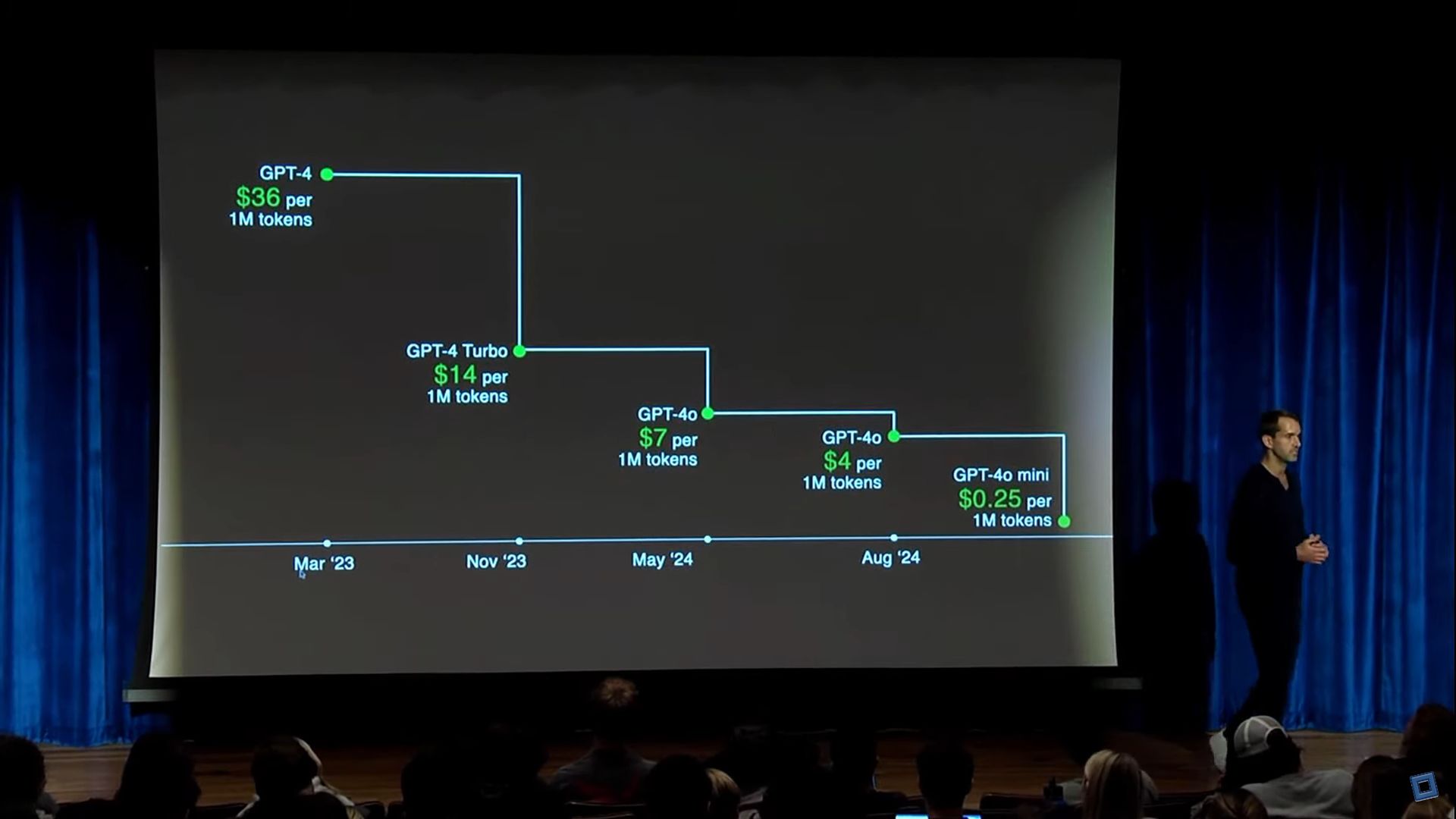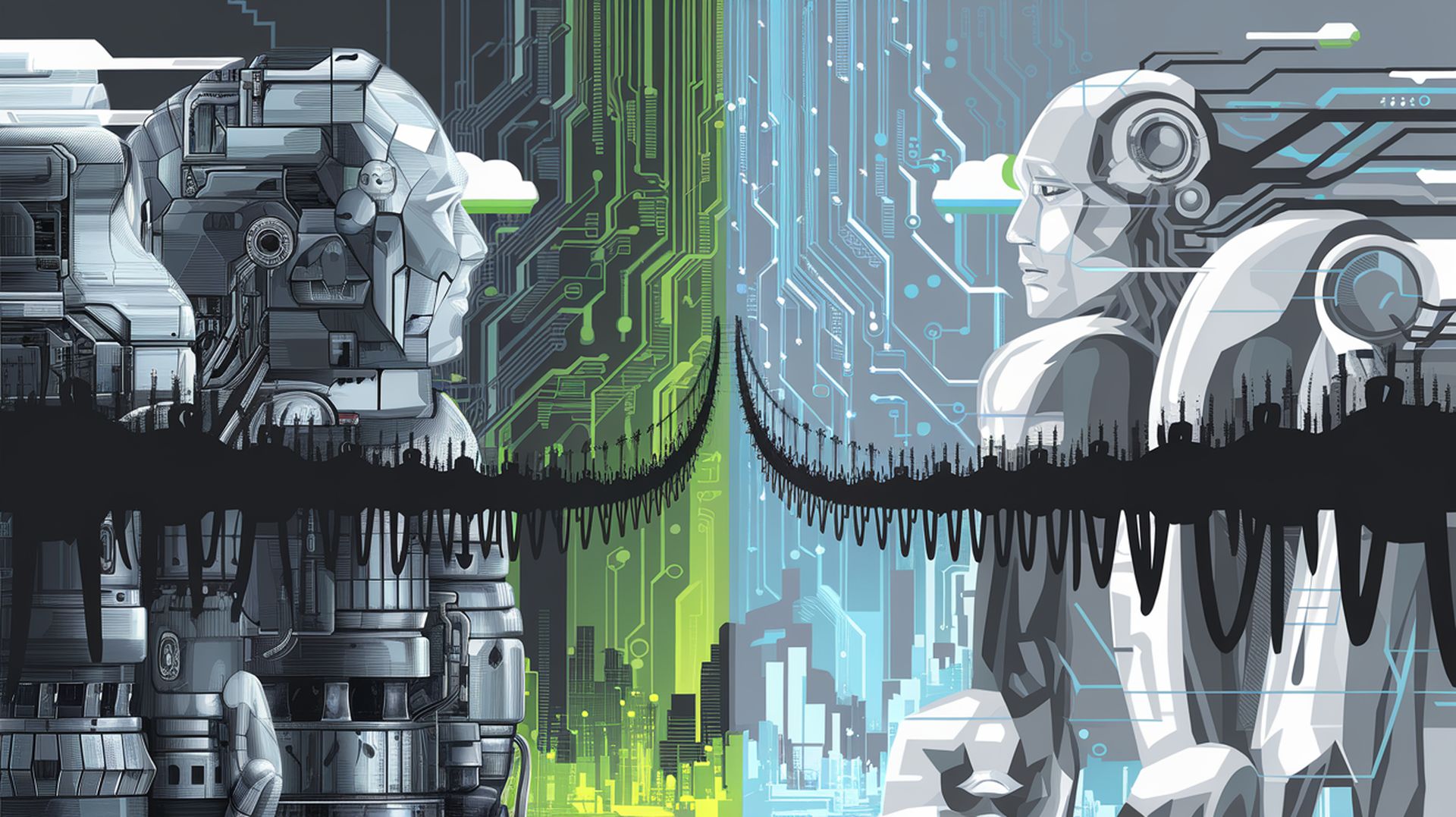OpenAI’s Dane Vahey recently shared stunning data showing that the price per million tokens has dropped from $36 to just $0.25, marking a shift in the affordability of AI. This has positioned AI as one of the most cost-cutting technologies in modern history.
Vahey, OpenAI’s chief marketing officer, highlighted this incredible price drop during a presentation at Bentley University. His talk focused not only on AI developments but also on its impact on careers, education, and the future of work. In addition to the numbers, he discussed how AI is opening doors for new opportunities and helping both students and professionals prepare for a future increasingly dominated by smart technologies.

Breaking down the numbers: What $0.25 means for AI
The most important takeaway from Vahey’s presentation is how much costs have come down in the use of AI. Eighteen months ago, it cost $36 to process one million tokens in AI models, while today the same transaction is just a fraction of the cost at $0.25. With such a dramatic drop in cost, shouldn’t people have easier access to AI? Has any company reduced its subscription prices recently?
But before judging too harshly, the change has also allowed OpenAI to offer many of its AI products for free, spurring global adoption and innovation. In his talk, Vahey talked about how AI models such as OpenAI’s own GPT series have scaled to hundreds of millions of users worldwide. The widespread availability of AI tools at minimal cost has enabled their adoption not only among tech companies but across a variety of industries, empowering businesses to innovate faster than ever before.
AI in everyday life: A generational divide
One of the most eye-opening parts of Vahey’s presentation was his discussion of the generational gap in AI adoption. According to the data he presented, only 39% of the current workforce uses AI tools weekly, while 75% of individuals 22 and under interact with AI every day. This younger generation, more AI-savvy, has developed distinct skill sets that set them apart in the workplace. As AI literacy becomes increasingly important, those with these skills are positioning themselves for leadership roles soon.
Vahey also examined the technological developments driving AI innovation. He described how OpenAI’s o1, currently in use, works: The first multimodal AI model that can process information in various formats such as text, video, and images simultaneously.
A key part of the demonstration involved showcasing the power of AI tools like Sora, which can create historical video scenes based on text commands. For example, by simply using a cue describing Paris in 1889, the system can create an immersive video featuring the Eiffel Tower and other elements from that era.

A future shaped by AI
The reduction in the cost of AI processing from $36 to $0.25, a remarkable 99% drop, signifies a breakthrough in making artificial intelligence more accessible and efficient.
- Economic effects: Lowering the cost of AI operations can save companies money. This could extend to reducing operational costs for services, making AI-powered solutions more affordable.
- Environmental impacts: AI uses a lot of energy, especially from data centers. This is a problem because data centers contribute a lot to global carbon emissions. AI systems could become more energy-efficient if they cost less to run. This would help to reduce the environmental impact of AI.
- Future possibilities: As AI becomes cheaper, data centers might look different. AI might use less power, which could make data centers greener. This could help the tech industry and global sustainability goals.
The price of AI dropped from $36 to $0.25 per million tokens, which is good news. However, we should be careful about getting too excited. Lower prices make AI more accessible, but this huge cut raises questions about AI’s future and ethics. How will this affect data privacy? As it becomes easier to use AI, more companies and developers may use it without thinking about the ethical issues. AI-driven data collection could increase, leading to more privacy issues as models process more user data at lower costs. Job displacement is still a concern as more processes are automated. The drop in prices could lead to environmental benefits, but it’s not clear if this will be true. If cheaper AI models are used more, the demand for data processing might rise, offsetting any energy savings.
Image credits: Furkan Demirkaya/Ideogram





